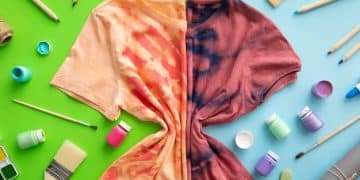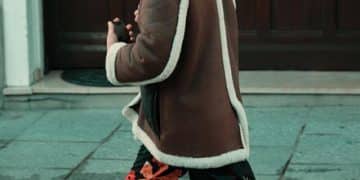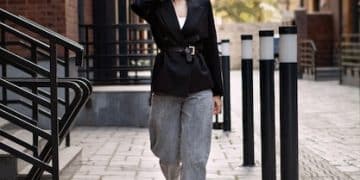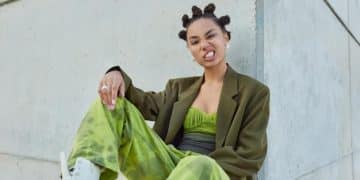Stylish on a Budget: 5 Creative Ways to Upcycle Your Wardrobe
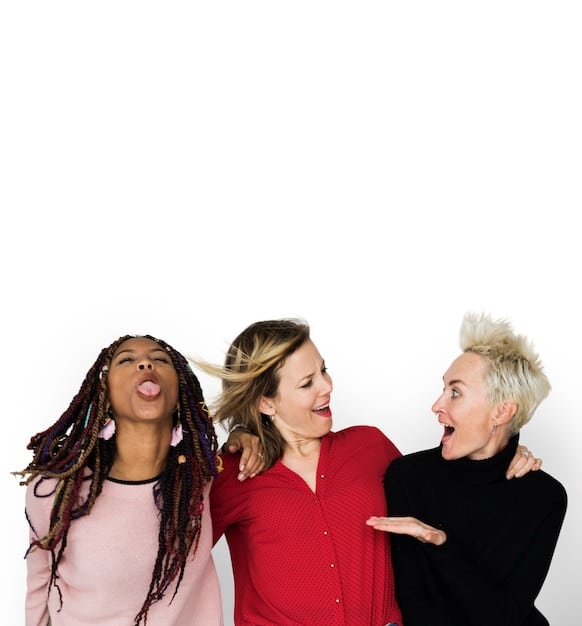
Advertisements
Looking for a stylish upgrade without the shopping spree? Upcycle your wardrobe and discover how your old clothes can become your next fashion statement, no splurging required.
This budget-friendly trend is all about reimagining what you already own. A few simple tweaks can turn forgotten pieces into standout looks.
Ready to get creative with your closet? Here are 5 fun and affordable ways to breathe new life into your wardrobe.
Advertisements
Unleash Your Inner Designer: The Art of Upcycling
Upcycling is more than a budget hack, it’s a form of creative expression that turns outdated or damaged garments into fashion-forward pieces. Instead of tossing that oversized shirt or ripped jeans, you can reimagine them with a few clever adjustments.
Add embroidery to an old jacket, turn a maxi dress into a two-piece set, or even patchwork a tee into a crop top. The possibilities are endless, limited only by your imagination and willingness to experiment.
This approach allows you to put a personal stamp on every outfit, making your style truly one of a kind.
Advertisements
You’re no longer bound by trends dictated by retailers, instead, you take the reins and create garments that reflect who you are. Whether you sew, paint, dye, or distress, upcycling transforms your wardrobe into a wearable art gallery.
Best of all, you don’t need to be a fashion expert to start. There are countless online tutorials, thrifted inspiration, and communities that share DIY ideas.
With some basic tools and a bit of patience, anyone can unleash their inner designer and turn old clothes into standout fashion pieces that feel fresh, expressive, and entirely unique.
Why Upcycling is the Future of Fashion
As the fashion industry grapples with its environmental impact, upcycling emerges as a powerful and practical solution.
Every year, millions of tons of textile waste end up in landfills, often items that are barely worn or entirely usable. Upcycling directly tackles this issue by giving clothes a second life and encouraging consumers to rethink their relationship with clothing.
This trend also aligns with growing consumer demand for sustainability and individuality. Instead of buying mass-produced items, people are gravitating toward pieces that tell a story, items they’ve created or altered themselves.
Upcycling disrupts the fast fashion cycle, offering a way to refresh your style without contributing to overproduction or unethical labor practices.
In addition to the ecological benefits, upcycling is empowering. It turns fashion into an act of self-reliance and innovation.
You reduce your carbon footprint, cut back on expenses, and step into a more conscious way of dressing. It’s not just a trend, it’s a movement that’s redefining what it means to be stylish in a modern, responsible world.
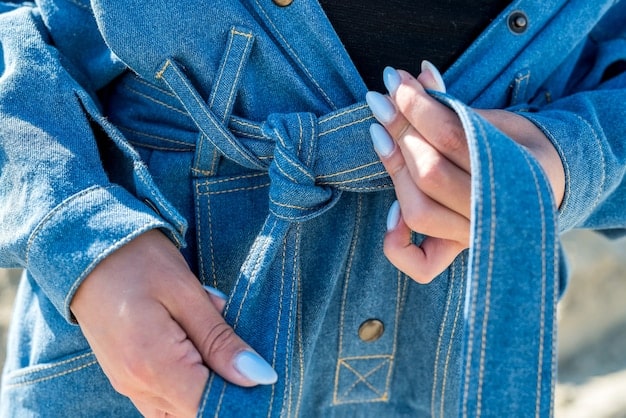
Transforming Basics: Simple Upcycling Ideas
Upcycling doesn’t have to be intimidating or time-consuming. In fact, transforming your basic pieces can start with the simplest tweaks that require little to no sewing skills.
An old oversized T-shirt, for instance, can easily become a trendy crop top with just a pair of scissors and some creativity.
Rolling up sleeves, cutting hems, or tying knots in loose garments are small changes that instantly refresh the look of any item hanging in the back of your closet.
DIY Distressed Denim
One of the easiest and most stylish upcycling techniques is distressing your jeans. With tools like sandpaper, a cheese grater, or a seam ripper, you can create custom tears, frays, and worn spots in all the right places.
Focus on the knees, thighs, or pockets for that perfectly undone vibe seen in high-end fashion. Not only does this add character to your denim, but it also gives you control over how edgy or subtle you want the look to be.
No two pieces turn out the same, making each pair of distressed jeans uniquely yours.
Adding Patches and Appliques
Another simple yet impactful idea is to personalize your basics with patches, appliques, or even hand-drawn designs using fabric markers or paint. This is especially useful for reviving pieces with minor flaws like stains or small holes.
By covering imperfections with fun elements, like floral patches, ironic quotes, or pop culture symbols, you not only repair your clothing but elevate it with artistic flair.
A plain black tee can become a statement item with just one bold applique or embroidered motif, transforming it from boring to bold in minutes.
These beginner-friendly upcycling methods don’t just extend the life of your wardrobe, they also allow your creativity to shine.
With just a few tools and a little inspiration, even the simplest items can become one-of-a-kind pieces that reflect your personal taste and flair.
Accessorize and Reimagine: Changing Perspectives
Sometimes, the key to reinventing your wardrobe isn’t sewing or cutting, it’s simply seeing your clothes in a new light. Accessories can breathe life into outfits you’ve worn a hundred times, making them feel entirely fresh.
Scarves, jewelry, belts, and hats are powerful tools that can dramatically shift the tone of an ensemble, giving you endless combinations without needing to buy anything new.
Belt It Up
Using a belt creatively can completely change a garment’s silhouette. A simple shift dress becomes a figure-flattering outfit with the addition of a wide belt cinched at the waist.
Likewise, a flowy top gains structure and dimension when paired with a slim leather belt.
Try experimenting with different textures, colors, and placements, such as belting over jackets or cardigans, to discover fresh, stylish variations within your existing wardrobe.
Layering Techniques
Layering is another brilliant way to maximize your closet’s potential. Don’t be afraid to combine pieces in unexpected ways: wear a turtleneck under a slip dress for a chic, cold-weather look, or transform a summer dress into a tunic by layering it over slim-fit trousers.
Sheer tops over bralettes or graphic tees under spaghetti strap dresses can also add visual interest and depth to an outfit. These styling techniques can give older items new purpose and make even basic pieces feel current and fashion-forward.
By reimagining how and when you wear what you already own, you not only extend the life of your clothes but also discover a more personal and inventive way to dress.
Upcycling isn’t just about altering garments, it’s about shifting perspectives and using style as a form of expression.
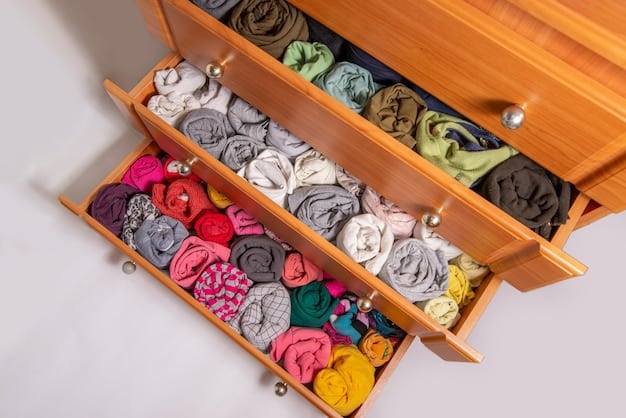
Clothing Swap Parties: Shared Style
Clothing swap parties are a creative and budget-friendly way to refresh your wardrobe while promoting sustainable fashion. The concept is simple: gather a group of friends, neighbors, or coworkers, and exchange gently-used clothing items you no longer wear.
What might be old or unused in your closet could be a hidden gem for someone else.
These swaps not only help circulate fashion pieces but also create a sense of excitement and discovery, as you never know what you might find, a vintage blazer, a statement accessory, or a perfect pair of jeans.
How to Host a Successful Clothing Swap
To host a successful clothing swap, it’s important to set a few ground rules that keep things organized and enjoyable.
Ensure that all items are clean and in good condition, and ask each guest to bring a set number of pieces, this helps keep the exchange balanced and fair.
Organize clothing by category or size to make browsing easier, and add fun elements like music, snacks, or even a mini runway to turn it into a real event.
Creating a relaxed and inclusive environment will encourage more people to participate and make the experience memorable.
Benefits of Clothing Swaps
- Sustainable Fashion: Promotes recycling and reduces textile waste.
- Community Building: Connects people with similar interests in fashion.
- Wardrobe Refresh: Provides new clothing options without spending money.
- Discovery: Offers the chance to find unique and unexpected items.
Clothing swap parties are not just about acquiring new clothes; they’re about fostering a sense of community and promoting sustainable fashion practices.
They offer a guilt-free way to update your wardrobe and connect with like-minded individuals.
Tailoring and Alterations: Custom Fit
Tailoring is one of the most underrated yet powerful ways to upgrade your wardrobe. Clothes that fit well not only look better but also boost your confidence and elevate your personal style.
You might already own great pieces hiding in your closet that just need a few simple adjustments to shine.
Whether it’s a blazer that’s too boxy, jeans that are too long, or a dress that needs a more defined waist, a few small tweaks can turn an overlooked item into a go-to favorite.
Simple Alterations You Can Do Yourself
Learning basic tailoring skills is easier than many think. Simple tasks like hemming pants, tightening a waistband, or adjusting the straps of a dress can be done at home with minimal tools.
With a basic sewing kit and some online tutorials, you can quickly master these skills and start personalizing your wardrobe.
Even hand-stitching small adjustments can make a huge difference in how a garment fits and feels.
Finding a Reliable Tailor
For more complex alterations or delicate fabrics, finding a reliable local tailor is a smart investment. A skilled tailor can reshape a garment to suit your body perfectly or even modernize outdated pieces with strategic changes.
Taking in the sides of a vintage jacket, shortening the hem of a skirt, or replacing old buttons with something more contemporary are small fixes that yield big results.
Tailoring allows you to make the most of what you already have, reducing waste and encouraging a more sustainable approach to fashion.
It’s about celebrating your unique body and personal style, and proving that you don’t need new clothes to look and feel amazing, you just need the right fit.
Online Resources and Inspiration: Virtual Upcycling
In today’s digital world, you’re never far from a wave of inspiration. Online platforms are teeming with creative upcycling ideas, step-by-step tutorials, and real-life transformations shared by DIY fashion lovers around the globe.
From YouTube to TikTok, you can find countless videos showing how to turn an old hoodie into a trendy crop top or how to give new life to a pair of shoes with a bit of paint and imagination. These resources make upcycling approachable and fun, regardless of your skill level.
Following Upcycling Blogs and Influencers
Following blogs and influencers who specialize in sustainable fashion is another great way to stay motivated.
Many of them share their personal upcycling projects, offer advice on techniques and materials, and highlight the environmental benefits of conscious clothing practices.
These creators often build communities of like-minded individuals who celebrate resourcefulness and creativity over consumption, providing a space to exchange ideas and support.
Using Pinterest for Upcycling Ideas
Pinterest remains a goldmine for DIY fashion enthusiasts. With a quick search, you can explore thousands of upcycling projects, from no-sew T-shirt transformations to denim reworks, embroidery guides, and beyond.
Creating a dedicated board to save ideas helps organize your inspiration and makes it easier to return to whenever you need a creative boost. This visual bookmarking system allows you to plan your projects with clarity and excitement.
Tapping into these online resources not only teaches you practical techniques but also empowers you to see your wardrobe with fresh eyes.
Instead of scrolling through shopping apps, spend a little time exploring what you can create from what you already own.
The internet becomes not just a tool for consumption but a powerful source of reinvention and self-expression.
| Key Point | Brief Description |
|---|---|
| ♻️ Upcycling Basics | Transform old clothes into new, stylish pieces. |
| ✂️ Simple Transformations | Distress denim or add patches for a fresh look. |
| 👗 Clothing Swaps | Organize swaps with friends for new outfits. |
| 🧵 Tailoring Tips | Customize clothes for a better fit. |
FAQ
▼
Upcycling transforms discarded materials into new products of higher value. In fashion, it means turning old clothes into stylish new items, reducing waste and promoting creativity efficiently.
▼
No, many upcycling projects require minimal sewing skills. Simple alterations, adding patches, or distressing denim can be done with basic tools. There are possibilities for all skill levels.
▼
Participants bring clean, gently used clothing to exchange with others. You can set rules regarding item quantity and quality. It’s a fun way to refresh wardrobes sustainably.
▼
Pinterest, Instagram, and blogs dedicated to sustainable fashion are excellent sources. Search for upcycling tutorials, DIY fashion projects, and creative clothing transformations to help inspire you.
▼
Tailoring ensures your clothes fit perfectly, enhancing your appearance and comfort. Simple adjustments like hemming or taking in seams can make a big difference in how you look and feel.
Conclusion
Revamping your wardrobe without spending a dime is entirely possible with a little creativity and resourcefulness. By embracing upcycling, exploring simple transformations, attending clothing swaps, mastering tailoring techniques, and seeking inspiration online, US fashionistas can create a stylish and sustainable wardrobe that reflects their unique personalities.
